Stories
ALGERIA THE NEXT INSTAGRAM DESTINATION?
While Morocco and Tunisia welcome every year millions of tourists, Algeria remain a destination that puts off potential lovers of Roman ruins, empty beaches, colonial architecture, or unspoiled deserts… Even if having the visa is no longer a headache, there are still too few visitors to take the plunge and visit a country that is now safe after years of civil war.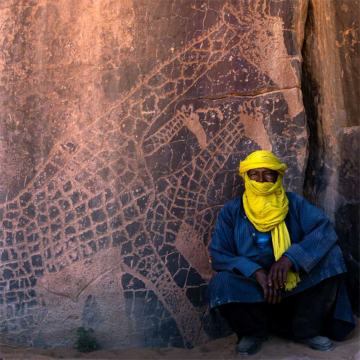
Click to open PDF and read more
FLOWER POWER IN BANGLADESH
In the northwest of Bangladesh, the Hindu village of Tikoil looks like a scene from a dream. Every mud house is covered in vivid motifs: flowers, birds, peacocks and swirling geometric patterns. Courtyards bloom with colour and even cattle sheds are adorned with designs.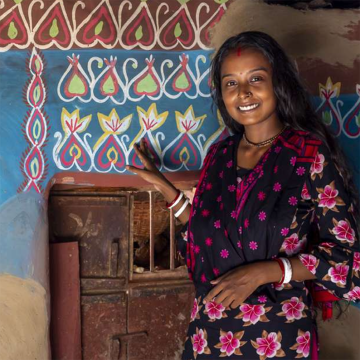
Click to open PDF and read more
HONEY AND TIGER IN BANGLADESH
Honey collection in the of Shyamnagar mangroves, on the edge of the Sundarbans in Bangladesh, is a centuries-old livelihood carried out by traditional foragers called mouali. Each spring, they venture deep into the mangroves to harvest wild honey, braving tigers.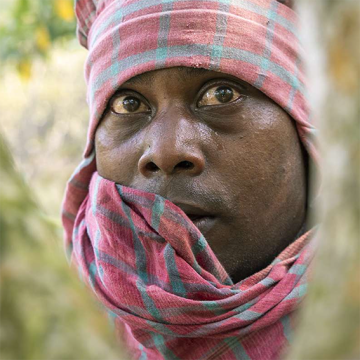
Click to open PDF and read more
KASHMIR: BACK TO LIFE
After years of riots and turmoils, Kashmir seems to be a welcoming place again for the tourists. Foreign tourists still have a dubious opinion about the secutity in this area, and very few still go there, while domestic tourists from all over India already come back for mainly Kashmir quietness and its legendary natural beauty.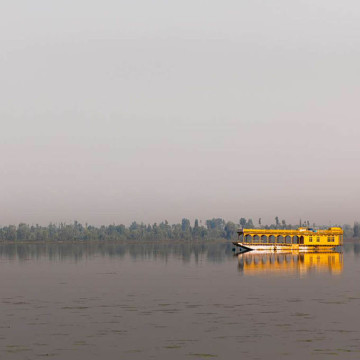
Click to open PDF and read more
MUNDARIS IN SOUTH SUDAN
4 hours from Juba in South Sudan live the Mundari. The Ankole-Watus cows are the pride of this tribe. When winter arrives, the herds migrate to a camp along the Nile. Beyond the beauty of the place and the harmony of the tribe with its animals, the Mundari are confronted with the arrival of the modern world.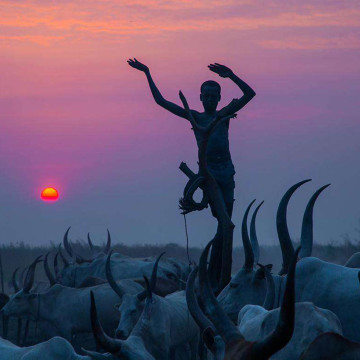
Click to open PDF and read more
SHEIK HUSSEIN: THE MECCA OF THE POOR
Sheikh Hussein is a town in south-eastern Ethiopia. Located in the Bale zone of the oromia region. The tomb of the 13th century sufi Sheikh Hussein who introduced Islam in the area, and is said to have performed many miracles is still visited by thousands of people. A huge pilgrimage takes place twice a year.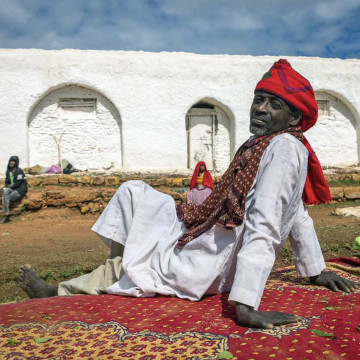
Click to open PDF and read more
FLOWER POWER IN SAUDI ARABIA
In the southern Saudi provinces of Jizan and Asir alongside the Yemeni border, you can still find “Flower Men.” The descendants of the ancient Tihama and Asir tribes have reveled in wearing colorful garlands for centuries. The wreaths are not only beautiful to look at but they are also exquisitely fragrant as they are made with fresh flowers. Many assume that Saudi Arabia is a huge desert but they are mistaken. The Kingdom is host to more than 2,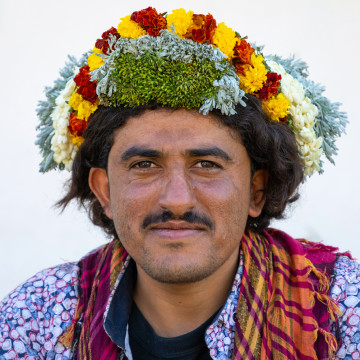
Click to open PDF and read more
BODIS: VERY BIG IS BEAUTIFUL
Every June, in Omo Valley in Ethiopia, the Bodi tribe celebrates their new year, the « Kael ». For 6 months, certain men from the tribe will ingest only fresh milk and blood from the cows in the hopes of being the biggest man. Everybody will take care of them, the girls bringing milk every morning. When the Kael comes around, the fattest man wins great fame. This area has kept his traditions despite the force of globalization.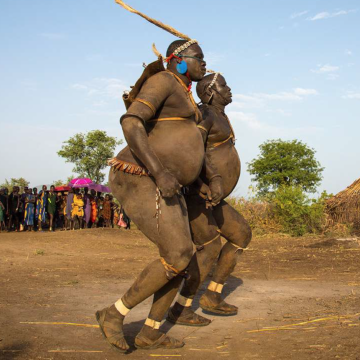
Click to open PDF and read more
IVORY COAST THE SLOW REBORN
After its independence from France, Ivory Coast was called the « Miracle of Africa » for its religious and ethnic harmony. It remains a model for his african neighbours, making it one of the most dynamic countries in the world. But a military coup in 2002 split the nation in two between the north and the south.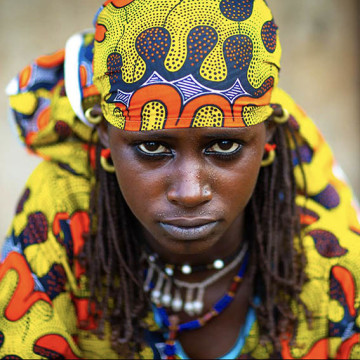
Click to open PDF and read more
WEDDING TIMES IN SOUTH IRAN
People in Hormozgan province in southern Iran have for centuries been practicing unique ceremonies and rituals in their marriages and weddings. They always take place in winter time as in summertime, the tempertures rise are over 50 degrees.
Click to open PDF and read more
TIMKAT IN ETHIOPIA
Celebrating the Baptism of Christ, every January, Timkat is the greatest festival of Orthodox Christians in Ethiopia. It celebrates the Baptism of Christ in the river Jordan by John the Baptist. The festivities begin in the 3rd week of January, the day before Epiphany which, according to the Julian calendar, falls on 19th January.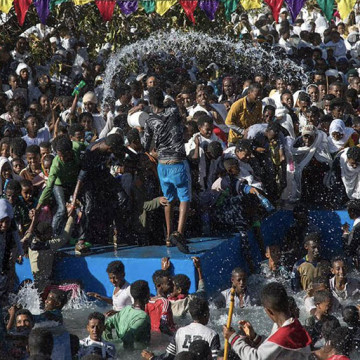
Click to open PDF and read more
FACEBOOK WAS BORN IN ETHIOPIA
Most of the people living in Alaba in Southern Ethiopia are farmers. They have a propensity to decorate the walls of their houses in a very unique style, both inside and outside. The main goal of these paintings is to depict what the house owner likes, his life, his religion or his dreams. Nobody knows when this art started, but many in Alaba say that this is the first Facebook!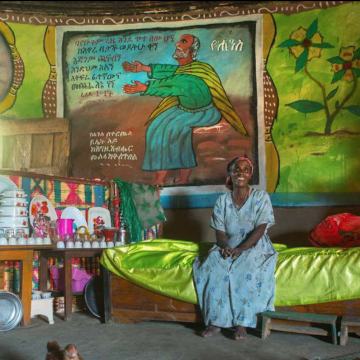
Click to open PDF and read more
I'M 20, I LIVE IN NORTH KOREA
Miss Kim is 20. She lives in Pyongyang. She’s studying English. She was lucky enough to come with me during a trip to North Korea as an assistant guide. She had never previously left Pyongyang. It was a unique opportunity for her to explore her own country. Though she was shy at first, she became talkative as the days went on, letting me in on the everyday lives of North Koreans, without ever crossing over the Party line.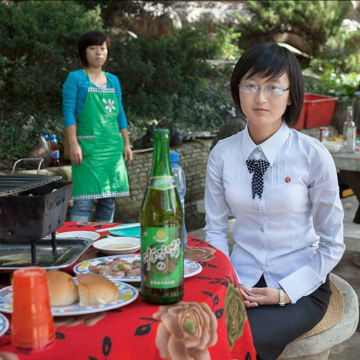
Click to open PDF and read more
BENIN'S LIVING DEADS
40% of the world’s twins are born in Africa. Benin’s Fon people have one of the highest occurrences. The high rate of infant mortality and voodoo religion, have begot some particular practices concerning the deaths of one or both of these twins. Once a twin dies, a wooden statue is carved, within which the spirit of the dead child is placed. These figurines are deified and treated almost exactly like the living children.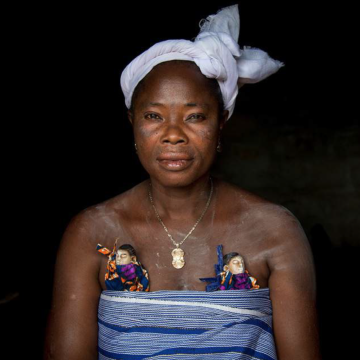
Click to open PDF and read more
ASMARA: PICCOLO ROMA
Asmara is the capital of Eritrea, famous for his long war with its neighbor, Ethiopia. Eritrea is a former Italian colony, full of incredible architecture constructed in the 1930s. Some call it the Miami of Africa as many Modern and Art Deco buildings can be seen. During colonialism, only white Italians inhabited them, and Eritreans were forbidden from entering them.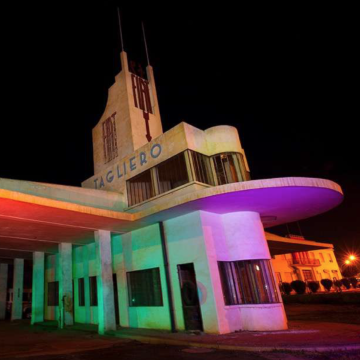
Click to open PDF and read more
THE GAMES ARE BACK IN NORTH KOREA
The Arirang mass games were stopped in 2013. The north korean government announced that they will return in 2018 to celebrate the 9th of September that marks the DPRK's 70th Anniversary. This incredible spectacle of gymnastics, acrobatics, dance and propaganda featured some 100,000 participants, and drew spectators from all over the world, including USA, for what was the biggest and most elaborate human performance on Earth.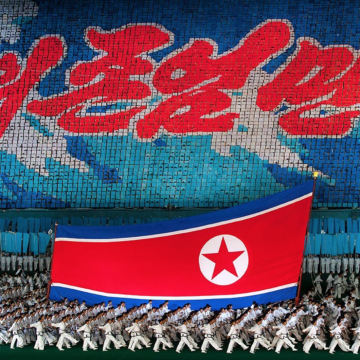
Click to open PDF and read more
ROHINGYAS THE WORLD'S LEAST WANTED
The religious tension in Myanmar is linked to a movement known as 969, Myanmar’s homegrown religious extremist group led by Buddhist monks. They claim to be the defenders of the Buddhist faith and the Burmese race against Islam. They call for a boycott on all businesses ruined by muslim people, including Rohingyas. Many people in the countryside are uneducated and easily influenced by this propaganda.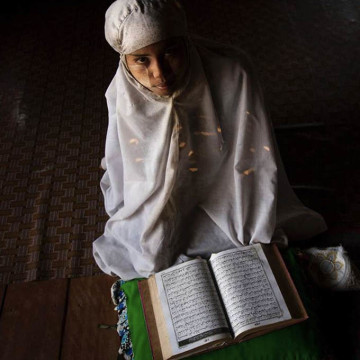
Click to open PDF and read more
THE PYONGYANG SUBWAY
Built in 1970s, Pyongyang Metro may soon become the best place for north koreans to escape « fire and the fury like the world has never seen » that promiseD Donal Trump. It includes only 17 stations on two lines, with a total length of 30 km. In Seoul it is about 300 km.
Click to open PDF and read more
24 HOUR WORKERS’ PARTY PEOPLE
Over the course of 6 trips to North Korea, I have collected pictures depicting the ways in which the Workers’ Party governs the daily lives of North Koreans. The Workers’s Party is like Big Brother: everywhere.
Click to open PDF and read more
SAUDI ARABIA FROM ABOVE
From sweeping desert sands to ancient settlements, these breathtaking drone shots lift the lid on Saudi Arabia's varied landscape. The best way to discover the incredible watchtowers and mud houses from the south and thehouses in the al-Balad quarter in Jeddah, a UNESCO World Heritage Site and there is ongoing conservation work led by the Ministry of Culture.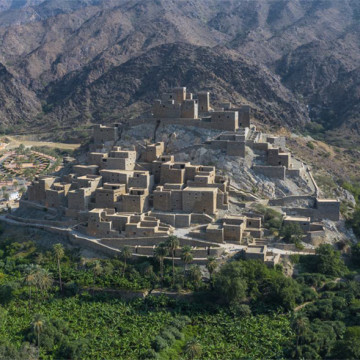
Click to open PDF and read more
UNVEILED SUDAN
The legendary Nile, practically undiscovered pyramids, brightly colored markets, gigantic caravans of camels, lagoons of crystal waters and unknown tribes all await me! I leave my credit card at home since the USA has cut off access to ATMs as part of the embargo against the Sudan. I prepare to give up alcohol, in accordance with the Islamic law the country is under.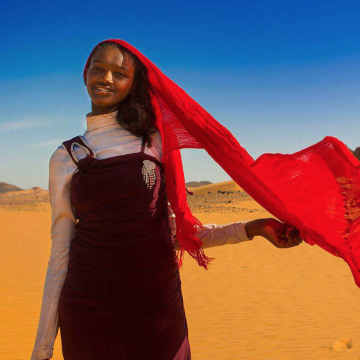
Click to open PDF and read more
THE QUEEN IN SLIPPERS
The Queen of the Okwanyama lives in Omhedi village, in the Ovambo area, Namibia. She lives in a palace, surrounded by tall concentric wooden fences made of Mopane wood that create a labyrinth. These serve not only to protect from the enemies but also from the elephants which still try to enter the villages and eat their food. Only the locals know the way to enter inside the palace, built to disorient invaders.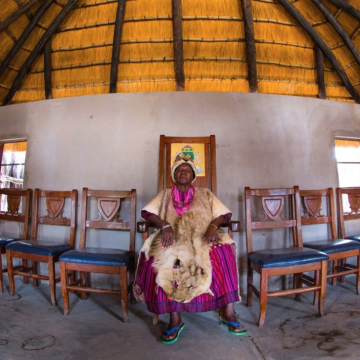
Click to open PDF and read more
A TOURIST IN SOMALIA
“Don’t get kidnapped!” This was the most frequent response I would get when I told people I was going to Somalia. I tried to explain that I was going to Somaliland, an autonomous region which had even experienced a peaceful transition of power through democratic elections. However, the stories of lawlessness, images of weapon-clad pirates, and of course Black Hawk Down made it impossible to change their minds.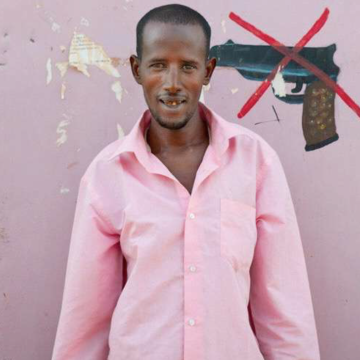
Click to open PDF and read more
FORGOTTEN ANGOLA
Angola is sadly infamous for its civil war, which lasted over 30 years. Today the country is at peace. It’s one of the most important producers of oil in Africa, but is still one of the poorest countries in the world. China is omnipresent. I’ll visit the south of Angola, with its many landscapers, natural sites, tribes, colonial towns and the Lisuthianian population who are very hospitable to their very few visitors.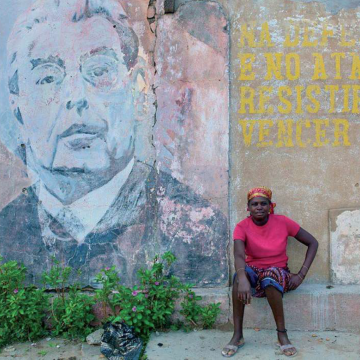
Click to open PDF and read more
QOYLLUR RITI IN ANDES
We’re in Peru, but two hours from the crowded streets of Cusco. We’re in the mountains, but far from the “must-see” ruins of Machu Picchu. Welcome to the Sinakara Valley, located deep in the Andes, where the thin air and freezing temperatures are no match for genuine devotion.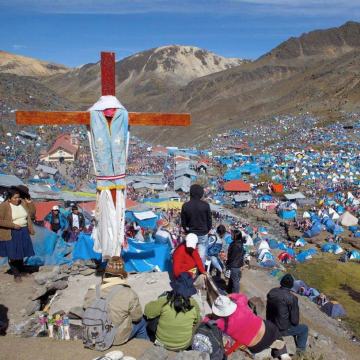
Click to open PDF and read more
SINGSING IN PAPUA NEW GUINEA
Every year at Mount Hagen, in the Highlands of Papua New Guinea, the biggest reunion of tribes in the world takes place. In a region where the first white man was seen in 1930, traditions are still strong, and the pride of the tribes takes precedence over modernity. The festival was created in 1964 by Australian colonists to pacify the tribes.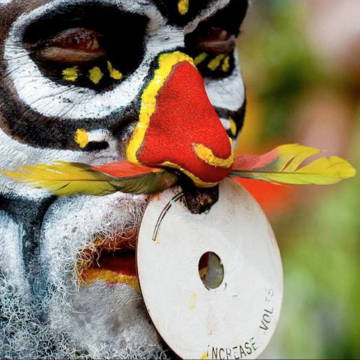
Click to open PDF and read more
TAPATI IN EASTER ISLAND
Every year on Easter Island, the planet’s most isolated island, the Tapati festival takes place. The island splits into two clans, led by two pretty young girls for whom teams will have to collect points by taking part in sporting or cultural events, on stage, land and sea! One of them will be the Queen of 2012, the dream of every little Rapanui girl.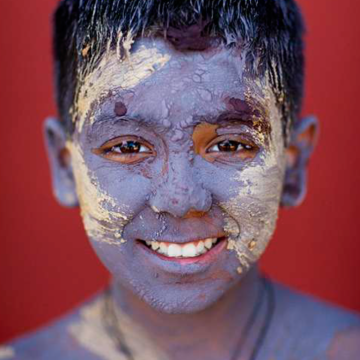
Click to open PDF and read more
TROBRIAND: THE FORGOTTEN PARADISE
On Trobriand Island, there’s no tv or electricity, no police, no thieves, few cars, and sex is casual for everybody.The national sport: half nude girls playing cricket. Money is still made from dried banana leaves. It may seem like Paradise, but in recent years, harvests haven’t been good. Men need to go in Port Moresby to work, and sometimes return infected with AIDS. The paradise is turning into hell…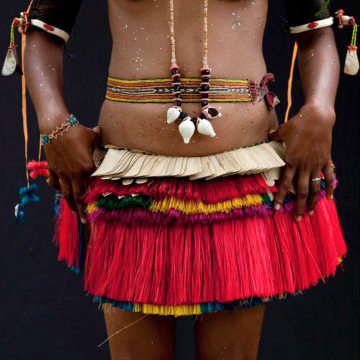
Click to open PDF and read more
PORTUGUESE IMPRINT IN ANGOLA
Angola was a Portuguese colony for a long time before slipping into a civil war. Once peace came about, many Portuguese buildings had fortunately been spared including government buildings, casinos, and cinemas. I ventured from Luanda to the coastal towns of as Lobito, Namibe, and Sumbe in search of art deco gems. It’s a flashback to a glorious past which could rise again thanks to the great wealth contained in the soil of Angola.
Click to open PDF and read more
KHUMB MELA
The Kumbh Mela takes places every 4 years, switching between 3 cities. In 2013, the Maha Kumbh Mela took place in Allahabad. 100 million pilgrims came, making it the biggest gathering of humans in history. The giant camps that are home to 20 million people at a time are built especially for the Kumbh Mela.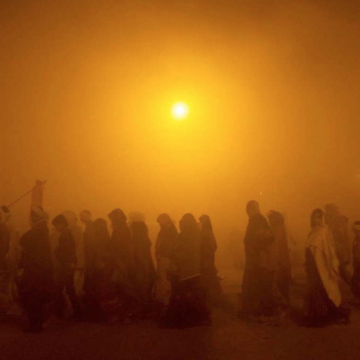
Click to open PDF and read more
THEYYAM: THE HUMAN GODS
The performers of Theyyam are all members of the indigenous tribal community in India. Only in Kerala do both the upper-caste Brahmins and lower-caste tribals share an important role in a major form of worship. The term Theyyam comes from Devam or God. People of these districts consider the performers of the Theyyam itself to be deities who can bestow them with blessings.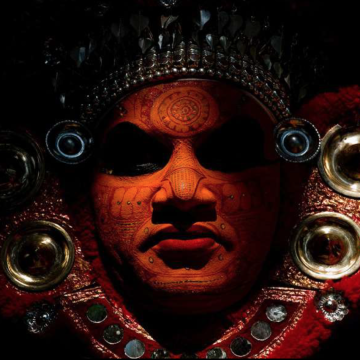
Click to open PDF and read more
HEAD UP IN IRAN
In Iran, ceilings of mosques palaces and historical houses can amaze the visitors.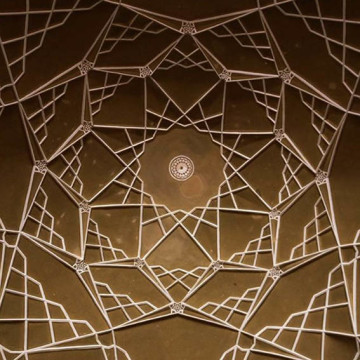
Click to open PDF and read more
AFRICA TOP SECRET CEREMONY
Meet the Karrayyu, a pastoralist tribe within the Oromo ethnic group, Ethiopia’s largest. While many Oromos have left behind traditions of the past under the force of globalization, the Karrayyu have managed to maintain their customs which date back centuries. Their lives are governed by a complex socio-political system known as “Gadaa”. The parties go through a cycle of five eight-year grades, each requiring new responsibilities.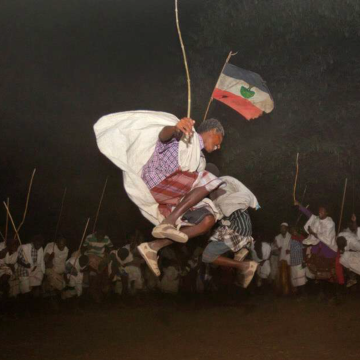
Click to open PDF and read more
LIVING THE DREAM IN MOZAMBIQUE
All the visitors of Mozambique promised me that that I will sunbathe on the most beautiful beaches, that I will be awed by the colonial architecture, and that I will never eat seafood so fresh anywhere in the world. I can’t wait to walk in the footsteps of Vasco da Gama and wander for miles in the quiet solitude of empty beaches.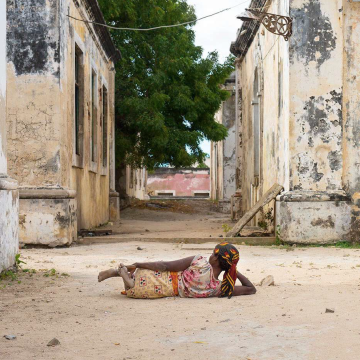
Click to open PDF and read more
BULL JUMPING CEREMONY
The Bull Jumping ceremony is the most important rite for the Hamer tribe of Ethiopia. It represents a life-changing event for the young man, known as « Ukuli », who passes from boyhood into adulthood. The Ukuli needs to walk 4 times across the back of 10 cows. If he succeeds, he is considered to have put aside childish things and is allowed to marry. If he fails to do so, his family will be shamed and he won’t be able to marry a girl.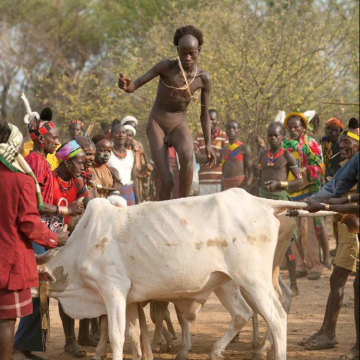
Click to open PDF and read more
STOLEN LAND IN AFRICA
Ethiopia is building one of the most powerful hydroelectric dams in Africa: the Gibe 3. The dam will also change the lives of all of the 200,000 tribal inhabitants of the region who depend on the Omo River. The government plans to move them all to new villages, where they are promised access to heath and education. These tribes, whose way of life depends on agriculture and livestock, are seeing their ecosystem totally thrown into disarray.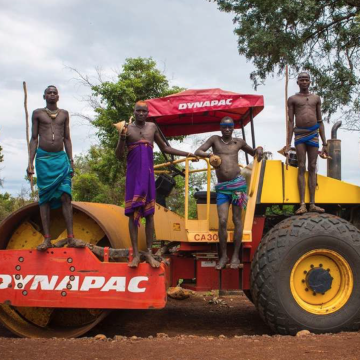
Click to open PDF and read more
DONGA FIGHTING IN SURMA TRIBE
The Surma live in southern Ethiopia. They have had to fight to protect their land and cattle, especially against their enemies, the Nyangatom. Civil War in Sudan flooded the area with guns. In this context of continuous insecurity, Surmas have to display their courage, their virility, and their strength, and Donga is a unique occasion to perpetuate their legend. In most cases, stick fighting is a way for warriors to find girlfriends.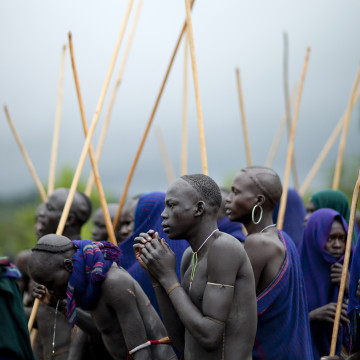
Click to open PDF and read more
LIFTING THE VEIL IN SAUDI ARABIA
Saudi Arabia is one of the most difficult places in the world to visit. Women under 30 years old must be accompanied by their husband or brother. It is not permitted for an unmarried couple to travel alone together in Saudi Arabia. But if you are ready to immerse yourself into this world, you’ll discover an incredible country with more attractions than you could believe.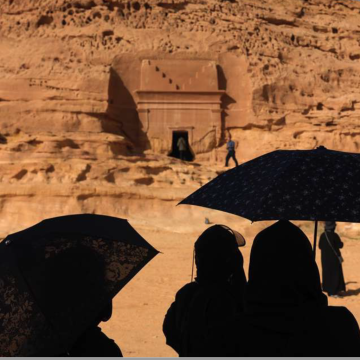
Click to open PDF and read more
XINJIANG: GO WEST!
Like in Tibet, the Chinese government changes the face of Xinjiang, home to the Uyghur people. The arrival of the Hans has boosted the local economy by bringing new motorways, airports and sanitary infrastructures. 65,000 Uyghur families must be moved into rent-controlled apartments in Kashgar. The Uyghurs now represent only 46% of the population of this important city on the Silk Road. There has been a real colonization from the interior.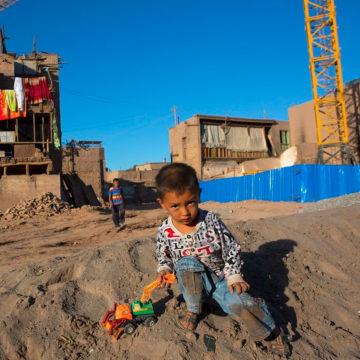
Click to open PDF and read more
JESUS IN AFRICA
Jesus in Africa can be seen everywhere!
Click to open PDF and read more
THE PICS KIM DOES NOT WANT TO SEE
Since 2008, I ventured to North Korea six times. Thanks to digital memory cards, I was able to save photos that I was forbidden to take or was told to delete by the minders. No pictures of soldiers, poverty, malnutrition are allowed in North Korea.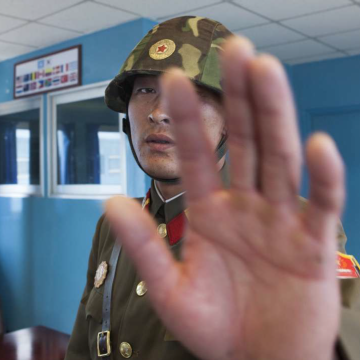
Click to open PDF and read more
BOTH SIDES OF DMZ
The DMZ is a 250km long and 4km wide stretch of land that serves as a buffer zone between North and South Korea. There are huge differences between the two sides but not always the way one might expect… The Joint Security Area in Panmunjom is called a “demilitarized zone” but in fact, it is the world’s most heavily armed area as well as a major tourist attractio with more than 100,000 tourists visiting each year.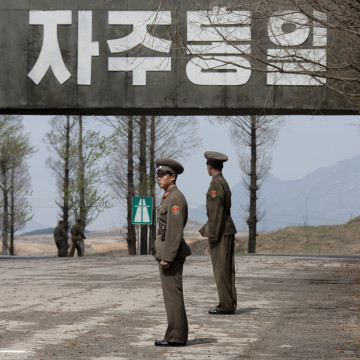
Click to open PDF and read more
NORTH KOREA vs USA
People wearing Nike caps and Mickey Mouse shirts, driving Hummers, drinking Coca-Cola, using Windows on their computers… No, you are not in the USA, but in North Korea! North Koreans love symbols of typical US commercialism (although most of them are fake brands made in China) but at the same time, they also hate the American imperialists.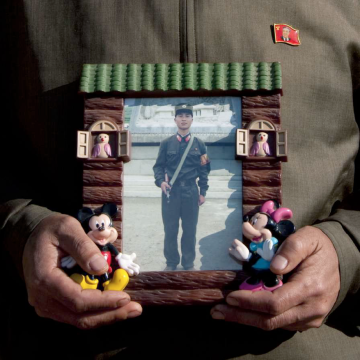
Click to open PDF and read more
THE NAMIBIAN SANS
The San are famous around the world thanks to the film “The Gods Must Be Crazy” and also to their unique clicking language. They live in Botswana, Angola, Zambia, Zimbabwe, South Africa, and in the Tsumkwe area in Namibia’s Kalahari. The San have lived in this region for 23,000 years. The San hunter-gatherer culture is in transition, and remains under constant threats from social prejudice, poverty, as well as assimilation into other cultures.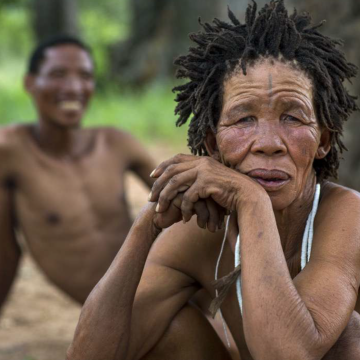
Click to open PDF and read more
HIMBAS SECRETS IN NAMIBIA
Approximately 10,000 Himba pastoralists live in the Kaokoland, northwest Namibia along Cunene river. Another 3,000 live in Angola. The Himba are nomadic, moving place to place in search of better grazing lands for their goats. According to a local proverb, “A Himba is nothing without his cattle.” Himba women spend several hours each morning making themselves as beautiful as possible since hairstyle is an indicator of status.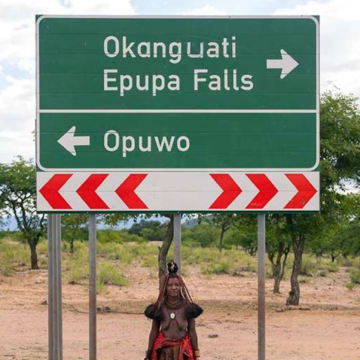
Click to open PDF and read more
THE PROUD OX CEREMONY IN OMO
In the lands around the Omo River in Ethiopia, 200,000 people live, divided among various traditional tribes. The Dassanech are one of these many tribes. Tensions are high, even within tribal clans, as the cows, their treasure, are starving due to the increased scarcity of grazing pastures. Near Omorate, people tell me the Dassanech tribe have a big celebration. More than 200 warriors armed with kalashnikovs are celebrating their oxes.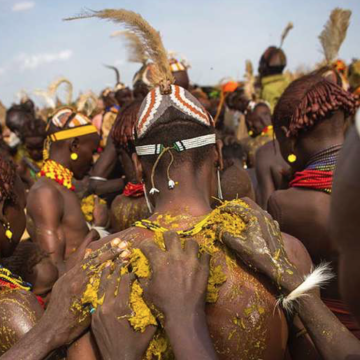
Click to open PDF and read more
NORTH KOREAN FASHIONNISTAS
In North Korea, women do not read Elle or Vogue; they just glimpse a few styles by watching TV or by observing the foreigners. Clothing also reflects social status. Chinese products have inundated the country, adding some color to the traditional outfits that were made of vynalon fiber. But citizens beware, too much style means you’re forgetting the North Korean Juche, the ethos of self-reliance that the country is founded on!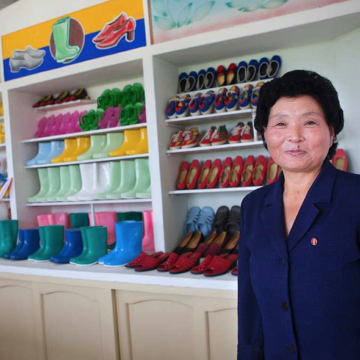
Click to open PDF and read more
AMERICANS SEEN BY NORTH KOREANS
The USA is the arch-nemesis of North Korea. North Koreans are quick to employ symbols of America in their own propaganda. Most of the propaganda posters depicting North Korea’s hatred of the USA have been removed from the streets. The only posters against USA that I could find were in the old fun fair where people were shooting at mannequins dressed as US soldiers.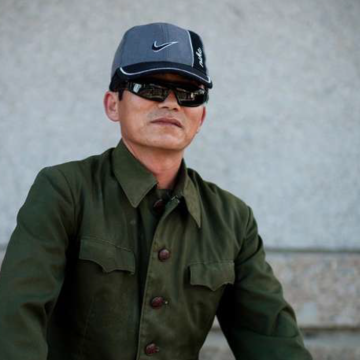
Click to open PDF and read more
SCARY SCARS
Tribes in Ethiopia’s Omo Valley share a taste for scarifications with their neighbors from Kenya and South Sudan. For women, it is purely a beauty sign. For men, it may have meanings about the enemies they killed or some heroic fights they had with wild animals. As the region begins to develop, hepatitis and HIV are also spreading through the use of shared razor blades.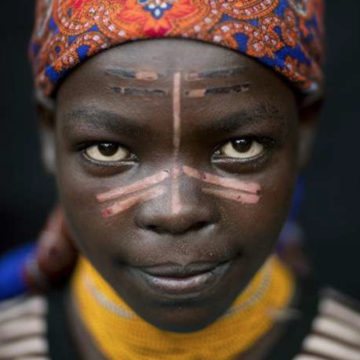
Click to open PDF and read more
THE HIDDEN SIDE OF PYONGYANG
Want to be chauffered in a brand new Hummer to a restaurant where you dine on caviar? Everything is possible in Pyongyang. Perhaps you’d prefer a hamburger (invented by Kim Jong Il in case you didn’t know)? And afterwards, take your time to shop, but be mindful of traffic jams if you do not want to be late for the opera! Far from the hungry children, see the other side of North Korea.
Click to open PDF and read more
THE NEW FOOTBALL STARS
Thousands of Football shirts of Arsenal, Manchester, Chelsea, etc end their career in… Ethiopia. Those second hand clothes are bought by the local tribes. Most of them ignore the meaning of those shirts and just buy them for the color, the logo, or the shape.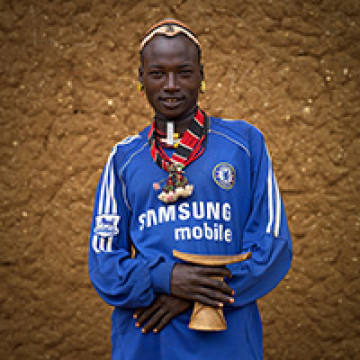
Click to open PDF and read more
NORTH THAILAND TRIBES
In northern Thailand, near the Myanmar border, some tribes like the Lahu still live close to the nature. They are known around the world for their unique long necks. Five hundred of them live in Thailand. Around forty thousand tourists come to visit them each year. As refugees from Myanmar, they live in poverty.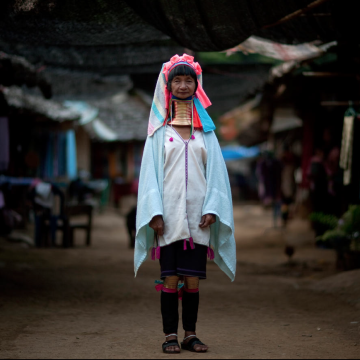
Click to open PDF and read more
INFANTICIDE IN OMO VALLEY
In southern Ethiopia, the tribes adhere to cruel traditions. One is that a village must kill any child known as “mingi” or cursed. A child can be Mingi for many reasons like if their first tooth grows in from the top instead of the bottom. Buko Balguda had 15 babies that were all deemed Mingi and subsequently killed. Since her husband did not undergo the Bull Jumping ceremony, a necessary step to becoming a man, he could not “legally” marry her.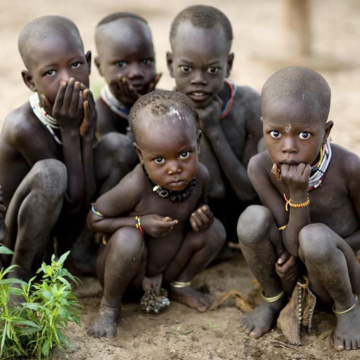
Click to open PDF and read more
THE KURDS: WALK ON MY HEAD
Today there are close to 40 million Kurds in Syria, Iran, Turkey, and Iraq. Despite a tragic history full of genocide, mass migration, and war, the Kurds have built a reputation for being the world’s most welcoming people. I visited them in the two places in which their territory is recognized: the Kordestan province of Iran and the autonomous region of Kurdistan in Iraq.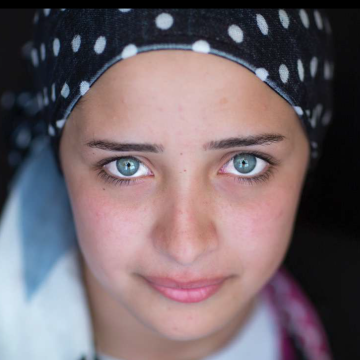
Click to open PDF and read more
FIGHTING FOR BEADS IN KENYA
The Samburu and Rendille live in northern Kenya. Beaded adornments are worn mainly for their aesthetic purposes, but can also signify specific relationships or mark special events. Beads are not only part of tradition, but a sophisticated and evolving fashion!
Click to open PDF and read more
RASHAIDA: GYPSIES OF THE RED SEA
When the Rashaida arrived in Africa from Saudi Arabia in the mid-19th century, they became nomadic camel pastoralists, learning the secrets of the desert. This knowledge has allowed them to become very good smugglers, especially between Eritrea and Sudan. The Rashaida men are also famous across Arabia for their camels that the richest Emirati people purchase for racing and breeding.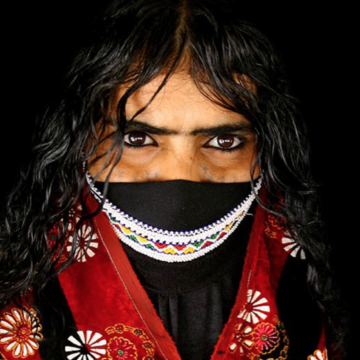
Click to open PDF and read more
TURKANA: HELL ON EARTH
The Lake Turkana region presents a lunar landscape covered in black volcanic rocks. It’s an extremely inhospitable environment for humans. During the day the high temperatures (up to 45°C) are accompanied by strong winds kicking up dust (up to 11 meters per second). Nobody should be able to live in these conditions, and yet 250,000 Turkana people are living here, maintaining their traditions.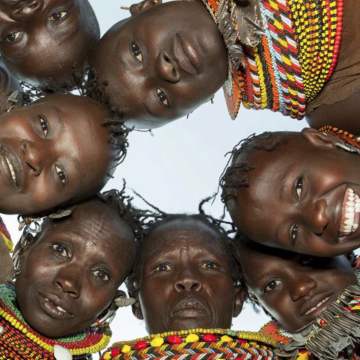
Click to open PDF and read more
THE LAST EL MOLO IN KENYA
The El Molo tribe live on the shores of Lake Turkana, the largest desert lake in the world. With a population of only 200 pure-blooded people, they are the smallest, shortest, and poorest ethnic group in Kenya. Each year members of the tribe die of hunger. Many live thanks to help from their neighbors. The El Molo have always been a peaceful, quiet, and non-violent tribe.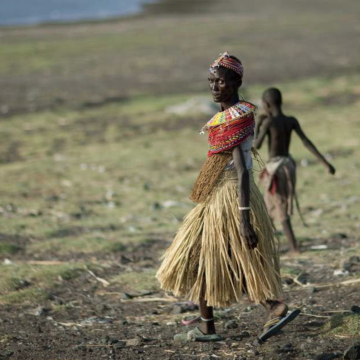
Click to open PDF and read more
EL SOD: THE SALT OF LIFE
El Sod, the House Of Salt, is a village located 90 km away from Yabelo, the capital of Borana people in South Ethiopia. It stands on the edge of an extinct volcano and a salt lake in the crater. For centuries, men dive into the lake to collect the salt and sell it across Ethiopia, Somalia and Kenya.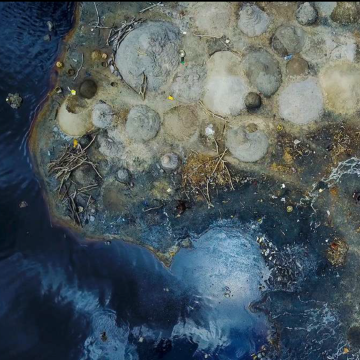
Click to open PDF and read more
LIVING UNDER THE VOLCANO IN PAPAU
September 19, 1994 – An eruption of volcanoes devastated the town of Rabaul, the former capital of East New Britain Island in Papua New Guinea. Thanks to an early warning, very few people died.Some people still live in the volcano area as they do not have enough money to leave their homes.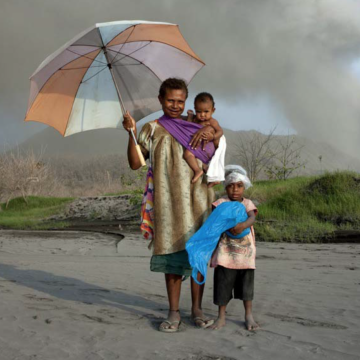
Click to open PDF and read more
MYSTERIOUS YEZEDIS
The Yezidis’ religion blends elements of Sufism, Judaism, Christianity and even Zoroastrianism. They are not muslims but they are are seen by Islamic State terrorists as Devil-Worshippers and heretical Muslims. Many of them live around Lalesh which is their holy temple, in Kurdistan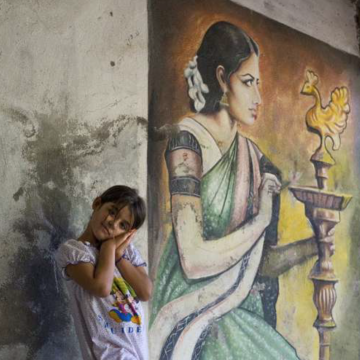
Click to open PDF and read more
YEZEDIS BACK FROM HELL
Up to 200,000 yazedis people have been displaced from Sinjar when ISIS arrived by surprise. The islamist group asked the residents to convert or die…Hundreds of Yazidis were executed as they refused. Most of the people left the village on time, fleeing on foot in the mountains, under a 50 degrees temperature. They walked for 7 days. Many were killed, wounded or captured on the way…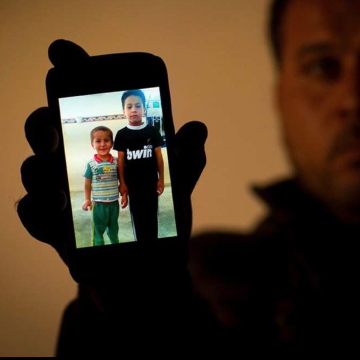
Click to open PDF and read more
GRANDE HOTEL MOZAMBIQUE
The Beira Grande Hotel was once the most luxurious hotel in Africa. The giant complex had around 120 suites, a cinema, an Olympic swimming pool, a helicopter pad, restaurants, a bank, a post office – it was a city in itself. Since shutting down, this colonial dream has become a nightmare. After being used initially as military base during the civil war, the squatters moved in.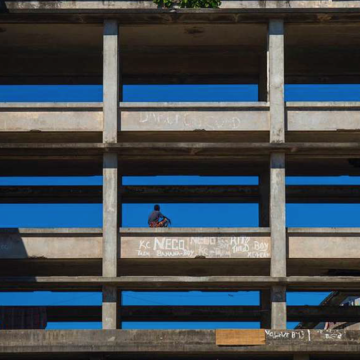
Click to open PDF and read more
REFUGEES IN A 5 STARS HOTEL
Outside of Dohuk, Iraq, what was supposed to be a 5 star hotel has become a nightmarish makeshift refugee camp for Yazidis refugees. After ISIS attacked Sinjar, massacring and enslaving the local Yazidi people, a few of those fortunate enough to escape have sought refuge at the 13 storey “Hotel Kayar”.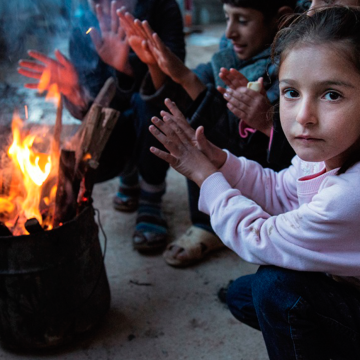
Click to open PDF and read more
INTERNET IN NORTH KOREA
Officially, 2 M North Koreans have access to a computer but few are connected to the national intranet as you need to be in an university or an official office. Everyone who owns a computer must register it. USB keys and small hard drives have become an huge source of information from outside the country.The mobiles phones from North Korea have all the options to access to the web, but the 2M subscribers do not have this option…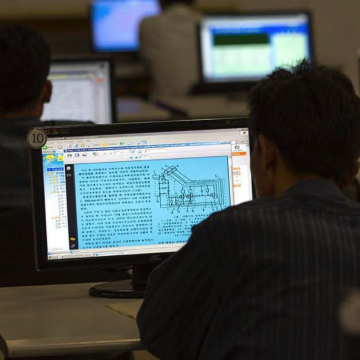
Click to open PDF and read more
THE KEEPERS OF THE SINGING WELLS
The Borana live in Kenya, Ethiopia and Somalia. They are semipastoralists, and live in arid areas. Their lives revolve around their animals: camels, cows, sheep, goats, and donkeys. Livestock are their only wealth and are used in religious sacrifices or to pay for a bride or legal fines. But animals need to graze, so the Borana often have to move to find the best lands and take care of the vital wells…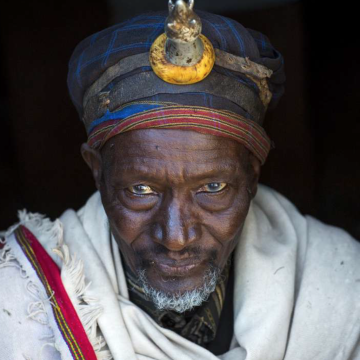
Click to open PDF and read more
CHAINED TO KHAT
The khat is a leafy plant which acts as a stimulant when chewed and which has recently been banned as a class C drug in the UK. Some farmers stopped growing coffee and plant khat instead since it can be easily harvested all year round. Khat is grown with a lot of pesticides, and people do not wash it before chewing it. There are serious concerns about the long-term risk of mouth cancers in the area.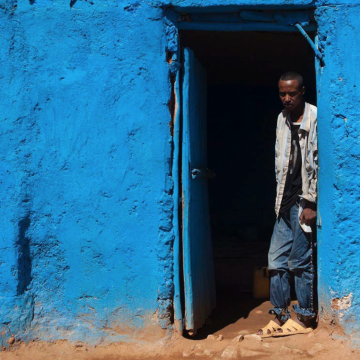
Click to open PDF and read more
NORTH KOREAN BLOCKBUSTERS
Kim Jong Il was said to have thousands of films in his personal library. Famous actors are depicted on murals around the capitol. North Korean films tend to portray mostly communist and revolutionary themes including martyrdom for the Nation and sacrifice, patriots and heroes fighting real enemies (such as the Japanese) or monsters. Stories often revolve around an outstanding man guiding a powerful nation through dark times.
Click to open PDF and read more
FIGHTING ISIS WITH 60’s AK47
Many vets have returned to war, despite being well past middle-aged and having children and grandchildren. Some even behind comfortable lives in Europe to come back. For them, it is their duty to fight for their region. Despite being autonomous and having a large secessionist movement, Kurdistan is not recognized as a state distinct from Iraq. They have very few weapons, most of them are pre-Cold War AK47s. Some even date back to 1960.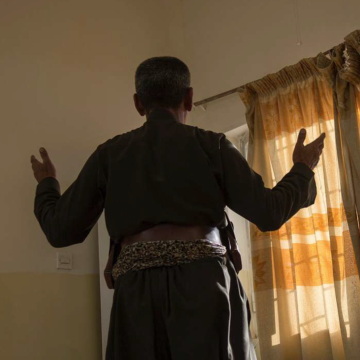
Click to open PDF and read more
UGLY BECOMES BEAUTIFUL
The Chin tattooed women live in the Chin, Rakhine and Arakan states in northwestern Myanmar. The origin of facial tattoos in the region is unknown. Some believe that the practice began during the reigns of Kings. The royalty used to come to the villages to capture young women. The men from the tribe may have tattooed their women to make them ugly, thereby saving them from a life of slavery.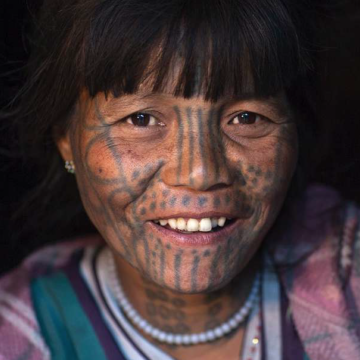
Click to open PDF and read more
ROHINGYA:THE WORLD'S LEAST WANTED
The religious tension in Myanamar between Buddhists and Rohingya Muslims is linked to religious extremist group led by monks. They claim to be the defenders of the Burmese race. A law from 1982 denied the Rohingya people of their Burmese citizenship, thereby removing their freedom of movement and allows the arbitrary confiscation of their property and lands.The UN has described the Rohingya as one of the most persecuted minorities in the world.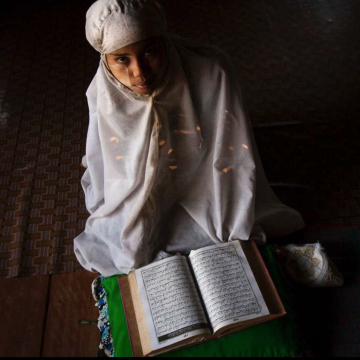
Click to open PDF and read more
NOVITATION PARADE IN MYANMAR
In Myanmar, everybody will be a novice once in their lives. The period can last from a few days to several months. As a very religious people, the buddhists Burmese place great importance on this, spending a lot of money to make it an unforgettable day for the child. Some families even go into debt. A formal novitiation ceremony starts with a parade around the pagodas. All the kids dress up as Burmese princes and princesses.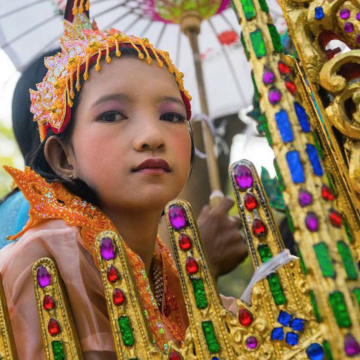
Click to open PDF and read more
AIRBNB IN NORTH KOREA
North Korea offers tourists homestays in a fishermen village in Chilbo area as long as they don’t ask questions. Jung Pyong Ri is part of a project to create homestays for tourists, allowing them a glimpse of life in North Korea, albeit a very sanitised version of reality.There are only 23 families in the area, which is so remote it is not located on a map.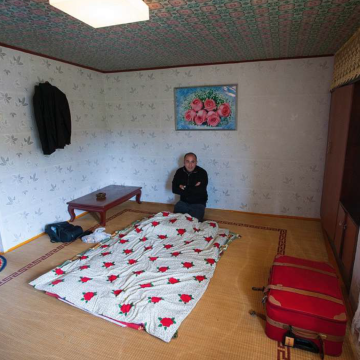
Click to open PDF and read more
RISKY FASHION IN IRAN
Spiked hair has reportedly been banned in Iran because it implies devil-worship.Jagged haircuts are fashionable among teens and young adults in Iran. The religious authorities deem them to be western and un-Islamic.Young Iranian men have also begun to pluck their eyebrows to the chagrin of the Islamic authorities.Violations could lead to arrests.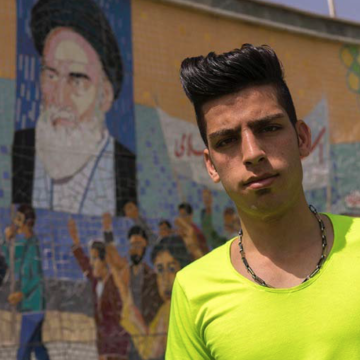
Click to open PDF and read more
ROMEO AND JULIET IN KOREA
Romeo was born in in North Korea. In the 90’s, he witnessed the devastating famine that hit his country. He decided to flee to South Korea. He will marry his Juliet, a south korean woman soon. In this conservative society, many South Koreans consider their northern neighbors as second-class citizens. But Romeo is someone really special: he is the first north korean defector who has an entrepreneurial vocation in SK.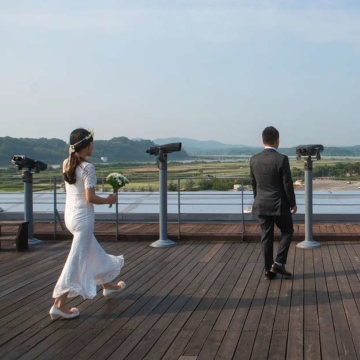
Click to open PDF and read more
MAGICAL VANUATU
The inhabitants of Vanuatu, the « Ni-Vanuatu », have lived on these small islands for centuries and have retained many of their original customs, or « kustom », as they refer to them. They wear pig tusks which have great value, very sexy penis sheaths, their drums are 3 meters high, they own magic stones to bring rain, and the last cannibals lived on the island of Malekula not so long ago…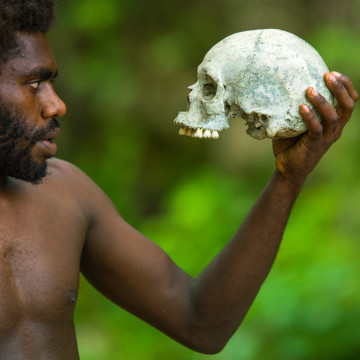
Click to open PDF and read more
PANAMA PARADISE LOST
Either a boat or plane is needed to reach the San Blas islands where the 50,000 Kuna live. The Kuna have gained a certain level of autonomy and in the process, have successfully maintained their traditions and unique customs.The Kuna suffer from some environmental issues as well. Rising sea levels and tropical storms threaten the islands, which mayfind themselves under water in the next 20 to 30 years.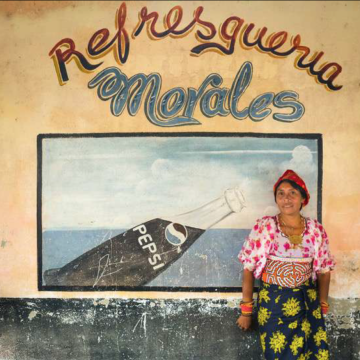
Click to open PDF and read more
IT'S GOOD TO BE THE KING IN BENIN
Benin has over 100 kings, remnants from a time before it was a country. These rulers no longer exercise any political power but they nonetheless have great influence among the people. For a long time, they resisted to the colonial power, so they still have maintained a level of prestige. Politicians shower them in gifts in the hopes of winning over their support.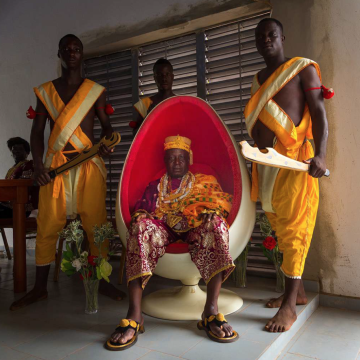
Click to open PDF and read more
THE DARKEST SHADE OF WHITE
In Tanzania, the albinos bodies are worth more than gold. Witchdoctors use their appendage to supposedly bring their clients good luck in politics or business. In early 2015, 200 people were arrested as part of a crackdown on the criminal element that hunts the albinos. But with body parts selling thousands of dollars, the fight to end albino persecution will be difficult in a country where the average monthly salary is less than 40 USD
Click to open PDF and read more
READ MY FACE: TATTOOS IN BENIN
All across Benin, nearly every man and woman has a unique scar pattern or tattoo on their face to mark their ancestral tribal membership. Scarification practices are now illegal in bigger cities like Cotonou. As a disappearing art form, it survives largely in the rural areas. The Holi, Somba, Otammari, Fulani, and Fon ethnic groups still have impressive scars and tattoos.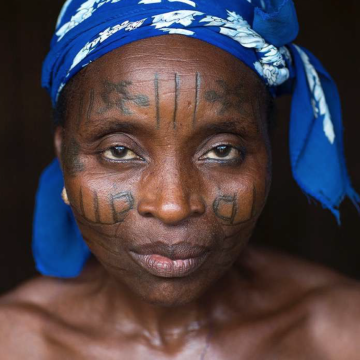
Click to open PDF and read more
TRASH BECOMES JEWELLERY
Caps from beer and Coke bottles have found an aesthetic purpose among the Dassanech tribe people who reside on the Omo riverbank in Ethiopia. Southern Ethiopian tribes recycle everything. Old watches bracelets can make great additions to necklaces for Hamer while the Mursi collected and recycled syringes caps after a vaccination campain as necklaces.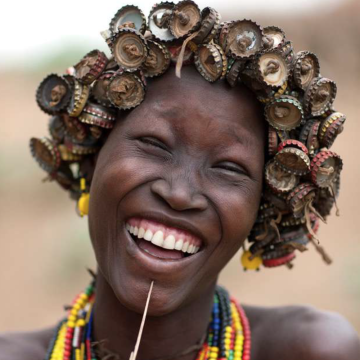
Click to open PDF and read more
MASKED WOMEN FROM SOUTH IRAN
In southern Iran bandaris many women still wear in their daily life the boregheh , anintriguing face mask. This traditional accessory gives them a mysterious allure for centuries.With patience, diplomacy and liters of tea swallowed, I could pierce the secrets of these ornaments and their significance in visiting villages along the Persian Gulf and the island of Qeshm.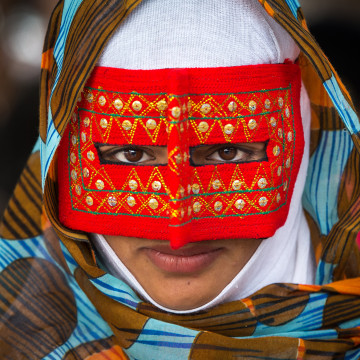
Click to open PDF and read more
AFGHANISTAN WITHOUT TALIBAN
There is a region in Afghanistan where the Talibans have never been able to impose their rule. Wedged between Tajikistan and Pakistan, the Afghan Pamir is an area of precarious peace. Promoted by the Afghan government to try and attract tourists in search of adventure, it is also the gateway to the Wakhan Corridor that Marco Polo used and it is where the Wakhis nomads live isolated from the rest of the world at an altitude of 4,500 meters.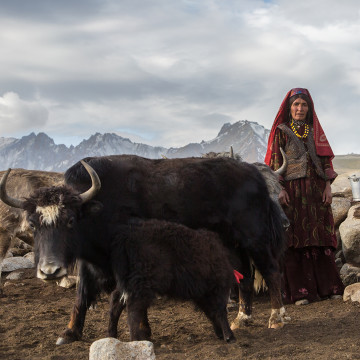
Click to open PDF and read more
IRAN VS USA: LOVE AND HATE
The United States and Iran have resumed their talks on the lifting of the embargo. But in the streets of Iran, there is still a lot of propaganda against the Americans, showing Obama as a traitor and U.S. Marines as murderers. At the same time, Iranian people increasingly appear to be adopting an American way of life, using iPhones, eating in fake KFCs, drinking Pepsi, and wearing Nike shoes.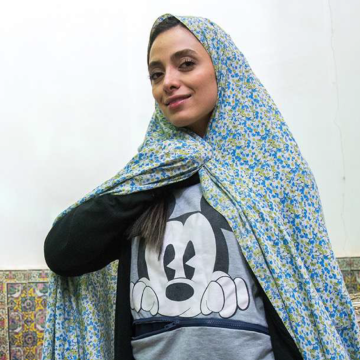
Click to open PDF and read more
NOT WITHOUT MY CHADOR
t is a challenge for Iranian women to be fashionable due to the extremely strict dress code enforced by the religious authorities. The Islamic Sharia law was imposed during the 1979 revolution. Since then, women have been forced to cover their hair, neck and arms and to wear long loose-fitting clothes to “maintain their modesty.” Accessories – mainly Western style ones – are playing a big role in their outfits.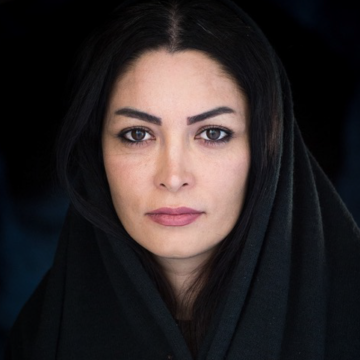
Click to open PDF and read more
MRAUK U: MYANMAR HIDDEN GEM
Mrauk U is an abandoned city, which is home to hundreds of temples and pagodas and lies across rolling hilltops in the northern Rakhine State. It’s a place that provides a unique experience in Myanmar as very few tourists have been there so far. Forget about wifi, you’re entering a totally different world!The temples are hidden in the jungle or in small farms, so the top of their structure is the only hint of their presence…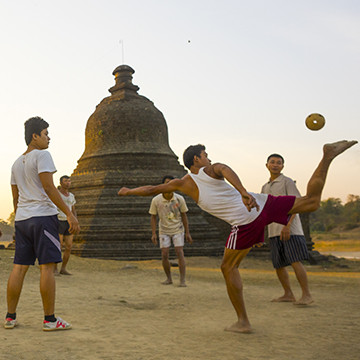
Click to open PDF and read more
THE DEAR LEADERS ARE WATCHING YOU
Everywhere in the Democratic People’s Republic of Korea (DPRK), you will see the portraits of the Dear Leaders. In houses, in offices, in hospitals, in the subway. They are always around you. If you look carefully, you will notice that the frames are tilted forward to avoid any glare that would make them difficult tosee. Only the portraits of Kim Il Sung and Kim Jong Il are to be seen. Kim Jong Un does not have a portrait yet.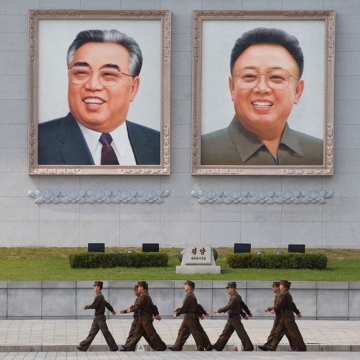
Click to open PDF and read more
ATOMIC SURFERS FROM FUKUSHIMA
On 11 March 2011, Japan was hit by an earthquake which generated a tsunami. It hit the Daaichi nuclear power plant. In Tairatoyoma beach, a prefecture of Fukushima and some 50km from the nuclear plant, was among the most popular areas for Japanese surfers .Despite the presence of radiation in the sand and water, some dedicated surfers continue to come here to catch some waves.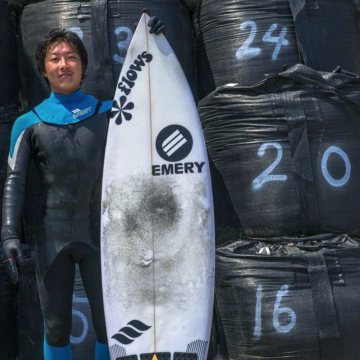
Click to open PDF and read more
A TEEN ON THE ROOF OF THE WORLD
Jumajhul belongs to the Wakhi people. He lives in the Pamir mountains in Afghanistan, at 4,600m above the sea level, in total isolation from the world and surrounded by yaks. He is probably the only teenager in the world who has never heard of Messi or Ronaldo. Although his life is very hard, he enjoys it and wouldn’t exchange it for anything.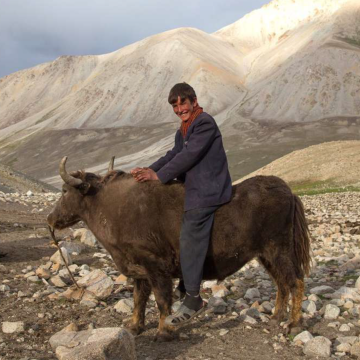
Click to open PDF and read more
INLOVE WITH HUSSEIN IN IRAN
No, you are not on the set of Game of Thrones. You are in Iran and the men in covered with mud are celebrating Ashura. Ashura is famous for the people practising self-flagellation but Ashura is more than that. For the Shia people, the Day of Ashura is the tenth day of Muharram and commemorates the killing of Hussein and his 72 relatives by the Umayyad caliphate in Karbala. In Iran, this is the time for unique celebrations all over the country.
Click to open PDF and read more
KNIVES TIMES IN ETHIOPIA
The Dassanech live in Ethiopia. Dwelling in isolation along the Omo River, they have retained an ancestral way of life. The entire lives of the Dassanech revolve around their cattle, their only wealth. To become a man, one must go through the ceremony of the Dime. It takes place every year in June. It is the most important ritual in the lives of young Dassanech. This is the time for circumcision for boys and excision for girls.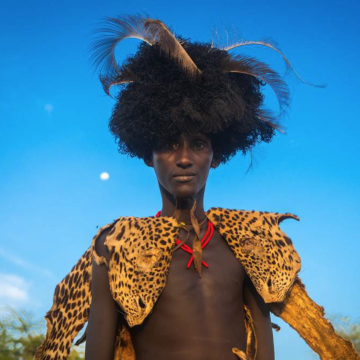
Click to open PDF and read more
TOURISM IN HEZBOLLAND
With the war in Syria, the lebanese border has became a red zone where the western governments advise against all travel. Once on the field, only few military check points remind the rare travelers that the tension is high as life goes on. In the Beqaa Valley, Hezbollah rules. It is a Shia Islamist political, military and social organisation. They control areas hosting UNESCO site, and have built a museum to glorify the war against Israel.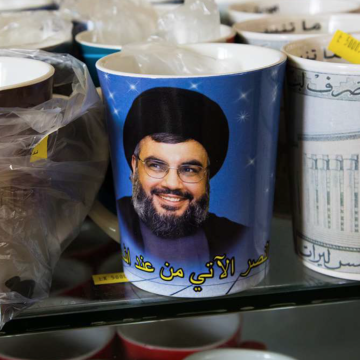
Click to open PDF and read more
PLASTIC EYES CHILD
Abushe lives in southern Ethiopia. No one would pay any attention to him, but if you catch a glimpse of his eyes, their incredible magnetic colour will stop you in your tracks. Abushe suffers from the Waardenburg syndrome. One of the characteristics of this syndrome is an abnormal spacing between the eyes but mainly a special pigmentation of the irises. This phenomenon is rare.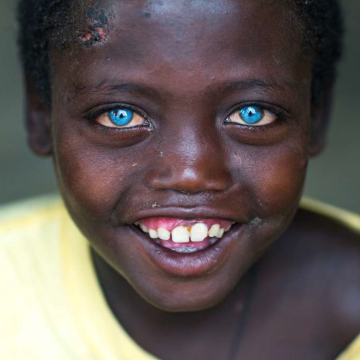
Click to open PDF and read more
NORTH KOREAN FLAT IN SEOUL
During the Seoul Biennial of Architecture and Urbanism, two architects, Calvin Chua of Singapore and Yim Dong-woo of Seoul have built a full-scale mockup of a North Korean apartment. The same to the ones you can find in Pyongyang among the buildings which welcome middle class people. It is forbidden for South Koreans, with rare exceptions, to travel to North Korea. So the architects imagined bringing a piece of Pyongyang to Seoul.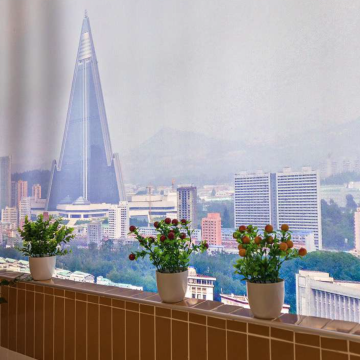
Click to open PDF and read more
TIBETAN MONKS GONE WILD
Once a year at the Rongwo Buddhist monastery, in the Tibetan Autonomous Prefecture in China, the monks take care of the temple’s walls. Once the task is completed, the monks can wage a water battle in the streets. This event is a way to lighten the pressure of everyday life as the young men live in very tough conditions at the monastery for years.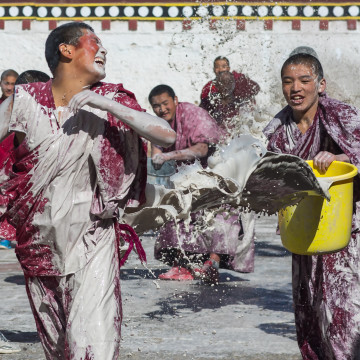
Click to open PDF and read more
BACKPACKS VS JERRICANS
In the northeast of Ethiopia, Afar children are happy to go to school. But each day, they are unsure if they will be able toattend class as for months now, they have had to carry out a vital task first: searching for water. For their families and for themselves, to bring to school with them.In the arid territory where they live, they have been suffering the most severe drought in 50 years according to the United Nations.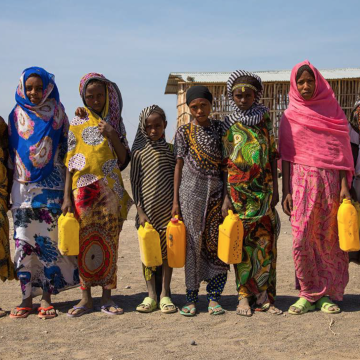
Click to open PDF and read more
CHEMICAL BEACH TOUR IN NORTH KOREA
The best beach in North Korea is located in Hamhun. My North Korean guide got starry-eyed while talking about this beach. He was extolling the « excellent stretches of pristine beach.” He told me that every North Korean citizen had the secret dream of enjoying a beach holiday. On the official brochure, it said, “Majon, the resort in thesuburbs of Hamhung and an industrial city” – an example of North Korean marketing.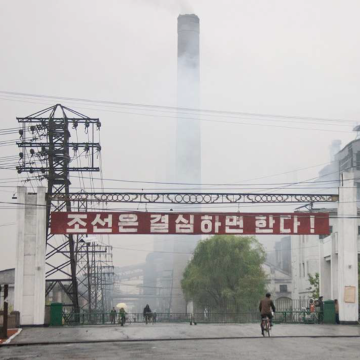
Click to open PDF and read more
SUNDAY IN NORTH KOREA
What do you do on a Sunday when you live under a dictatorship? You can hardly fly out of the country for the weekend or drive to the beach… So, Sunday is the time when North Koreans enjoy simple activities but also the best time for foreigners to meet them as everyone is more relaxed, including your own minders!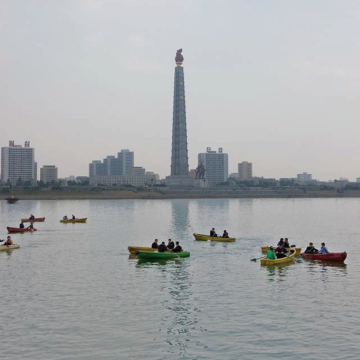
Click to open PDF and read more
HIGHWAY TO YELL IN NORTH KOREA
Travelling on the highways in North Korea is a great experience, as it allows us to see the daily life of the country not controlled by the government. The roads are as large as airstrips, however in poor conditions with numerous bumpings and holes. Everything is planned when you visit North Korea, even the bathrooms stops! According to the guide, it is too dangerous to stop on the highway to make a pee!
Click to open PDF and read more
DROUGHT AND POWER
In March 2017, the 71th Aba Gada was chosen among the Borana tribe in south Ethiopia. This ceremony celebrates the election of traditional leader, which is held every 8 years since 560 years ago. Lately classified by UNESCO, this event occurs in a very special context : the Borana tribe, part of Oromo people, is suffering from drought for months.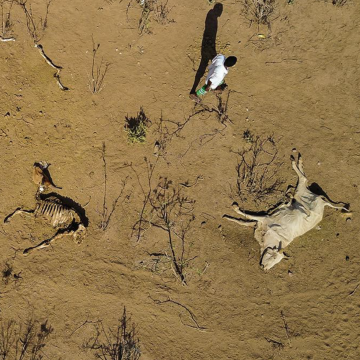
Click to open PDF and read more
NORTH KOREAN GHOST TOWN
The Mt Kumgang complex in North Korea, was built in 1998 by Hyundai. The project included hotels, a spa, a fire station, a golf, a supermarket, a clinic… The South Koreans tourists were allowed to visit this part of North Korea. In July 2008, a South Korean tourist was shot dead there. As a result, South Korea stopped all the tours in North Korea. In retaliation, North Korea decided to seize the whole tourist complex.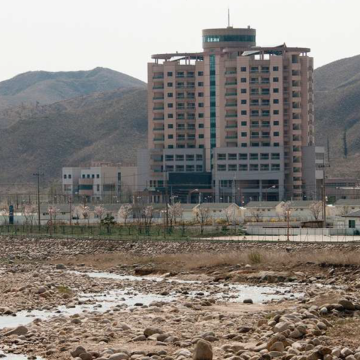
Click to open PDF and read more
TOOTH FILLING IN BALI
Balinese tooth filing is an ancient tradition that predates Hinduism’s arrival on the island . It’s believed that a Balinese may be denied entry into heaven if the teeth are not filed, because he/she might be mistaken for a wild creature. The aim of the ceremony is to symbolically “cut down” on the six negative traits that are inherent in humans : lust, greed, wrath, pride, jealousy, and intoxication.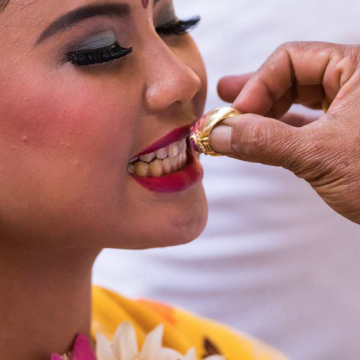
Click to open PDF and read more
ARMY IN NORTH KOREA
The very first order you receive from your guide when arriving in North Korea is NOT to take pictures of the soldiers. Many soldiers are used as a labor force to compensate for the ineffective North Korean economy, so the army is not only about military organization. North Korean soldiers can be seen working in fields, farms, or on construction sites in many places, far from military exercises.
Click to open PDF and read more
BEYOND THE PYONGYANG METRO
Built in 1970s, Pyongyang Metro includes only 17 stations on two lines, with a total length of 30 km. In Seoul it is about 300 km. Construction of the metro service began in 1968 and was inaugurated in 1973 by Kim Il Sung, the grandfather of Kim Jong Un. Each station is named after the revolution: Comrade, Red Star, Glory, Liberation, Signal Fire, Rehabilitation, Victory, Paradise, Restoration…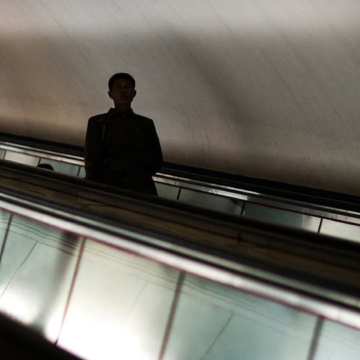
Click to open PDF and read more
TRIBES FASHION
In southern Ethiopia live tribes who have maintained a traditional way of life. Recently, the region has undergone rapid development. Though they continue to live modestly, these tribes have slowly begun to enter the world of international consumerism. This is due to the readily accessible products made in China. Their creativity in mixing foreign and modern styles with traditional tribal attire has given them a unique look.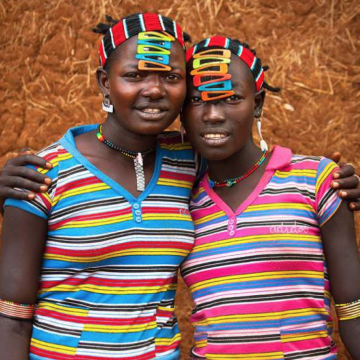
Click to open PDF and read more
POLAROIDS IN NORTH KOREA
My first visit to North Korea was in 2008. At that time, there were no mobile phones in the country. The only chance for taking pictures relied on the official photographers selling photo souvenirs to visitors at the entrance of the main monuments. I discovered Polaroid camera was the best way to interact with locals and immediately break the ice.
Click to open PDF and read more
PAEKTU, THE LAND OF FAKE NEWS
Mount Paektu volcano is a holy place for North Koreans. They consider it the place of their ancestral origin. In the 1950s, Kim Il-Sung commanded an anti-Japanese guerrilla from a secret camp located here. North Koreans say that his son Kim Jong-il was born here. He was actually born in Siberia. A new problem may rise: when North Korea tests a nuclear weapon, experts say that the energy released could trigger a volcano explosion.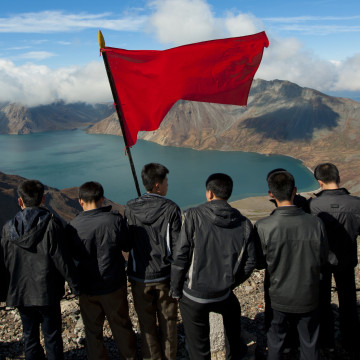
Click to open PDF and read more
